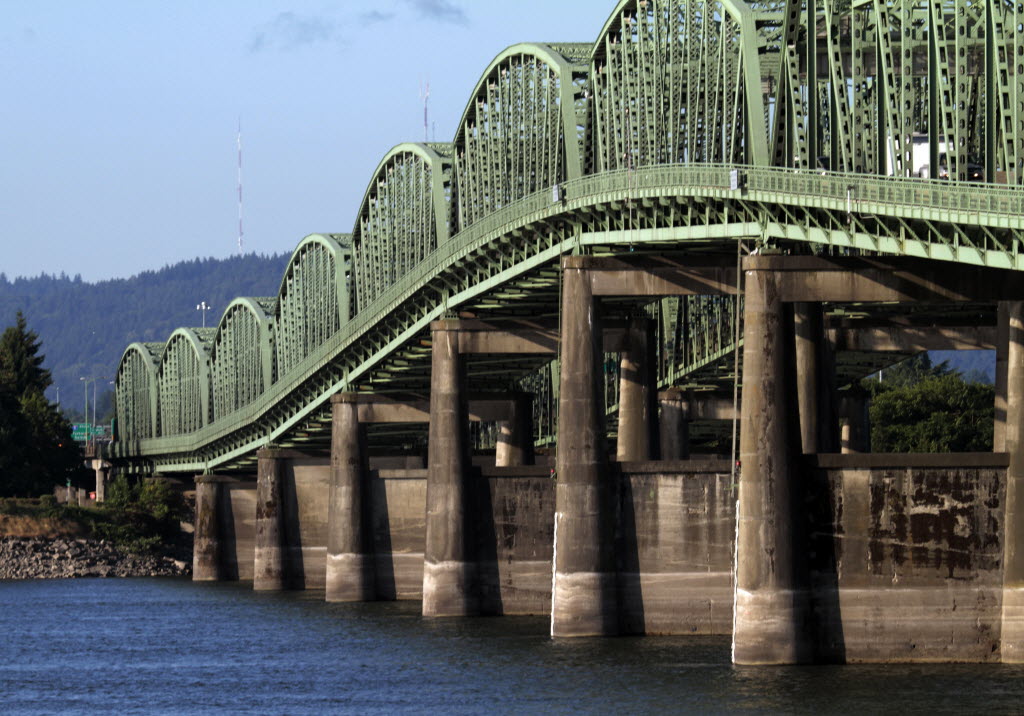Charging tolls on Interstate 5 could generate enough money to make the Columbia River Crossing financially viable, Oregon officials said after releasing a new report Tuesday.
An investment-grade analysis found that tolling the I-5 span between Vancouver and Portland could produce $1.35 billion to $1.57 billion in net revenue — enough to make the proposed Interstate 5 Bridge replacement pencil out. Leaders hope to begin construction on the $2.7 billion project next year. Tolling on the existing bridge could begin as early as September 2015, according to the analysis, and would continue until at least 2060.
The report was prepared by project consultant CDM Smith, and released Tuesday by the Oregon Department of Transportation. It comes as project backers prepare to make another push for support from the Oregon Legislature, which convenes in February. A joint legislative committee on the CRC could hold its first hearing as soon as next week.
CDM Smith’s analysis offers the clearest picture yet of what tolling and traffic could look like if the CRC is built — a picture that’s drastically different than the one laid out in the project’s Final Environmental Impact Statement in 2011.
The report assumes a lower peak-hour toll rate — $3.25 each way after 2022 for passenger vehicles — than past estimates. But it increases the off-peak toll for all other hours, ranging from $2.60 to $2.93 each way. Vehicles without a tolling pass would pay more.
Rates for trucks are higher, up to $16.25 for a six-axle vehicle.
The report also predicts a major traffic shift once tolling begins. Traffic volume on the I-5 B ridge could drop by as much as 40 percent initially as tens of thousands of vehicles go elsewhere to avoid tolls. Many project critics, including Portland economist Joe Cortright, believe that will lead to gridlock on nearby Interstate 205.
There are no plans to toll I-205 as part of the CRC.
The analysis shows that even in 2036, 20 years after tolling begins, traffic volumes on the I-5 B ridge will still be lower than they are today.
“It’s unclear to me why you would spend $3 billion to have a structure that carries fewer vehicles than the one you’re replacing,” Cortright said. “You spend all this money to build a bridge, and fewer people use it.”
Meanwhile, virtually all traffic growth will happen on I-205 during that time, Cortright said.
“It’s just obvious what’s going to happen,” he said. “You get this massive diversion.”
The Oregon transportation department has stated that lawmakers in Salem must commit funding to the CRC in February for the project to secure crucial federal money. But CRC leaders said the same thing last year, only to delay the project yet again as the latest schedule unraveled.
The Oregon Legislature did commit money to the CRC in 2013, only to see Washington walk away from the project later in the year. Oregon is now pursuing a scaled-back version that would still replace the I-5 Bridge and extend light rail to Vancouver, but eliminate much of the freeway work in Washington.
An investment-grade analysis is a required step before the project borrows money that will be paid back by toll revenue. In a letter to Oregon Gov. John Kitzhaber and legislative leaders, Oregon Department of Transportation Director Matthew Garrett said the analysis released Tuesday uses conservative estimates.
Project leaders also hope to apply for a key federal grant for light rail later this year.
Other key questions about the CRC remain, including whether Oregon can secure the necessary authority to build the project on its own. Under the current plan, Oregon would be responsible for collecting and enforcing all tolls. It would also take on all the debt required to build the megaproject.




